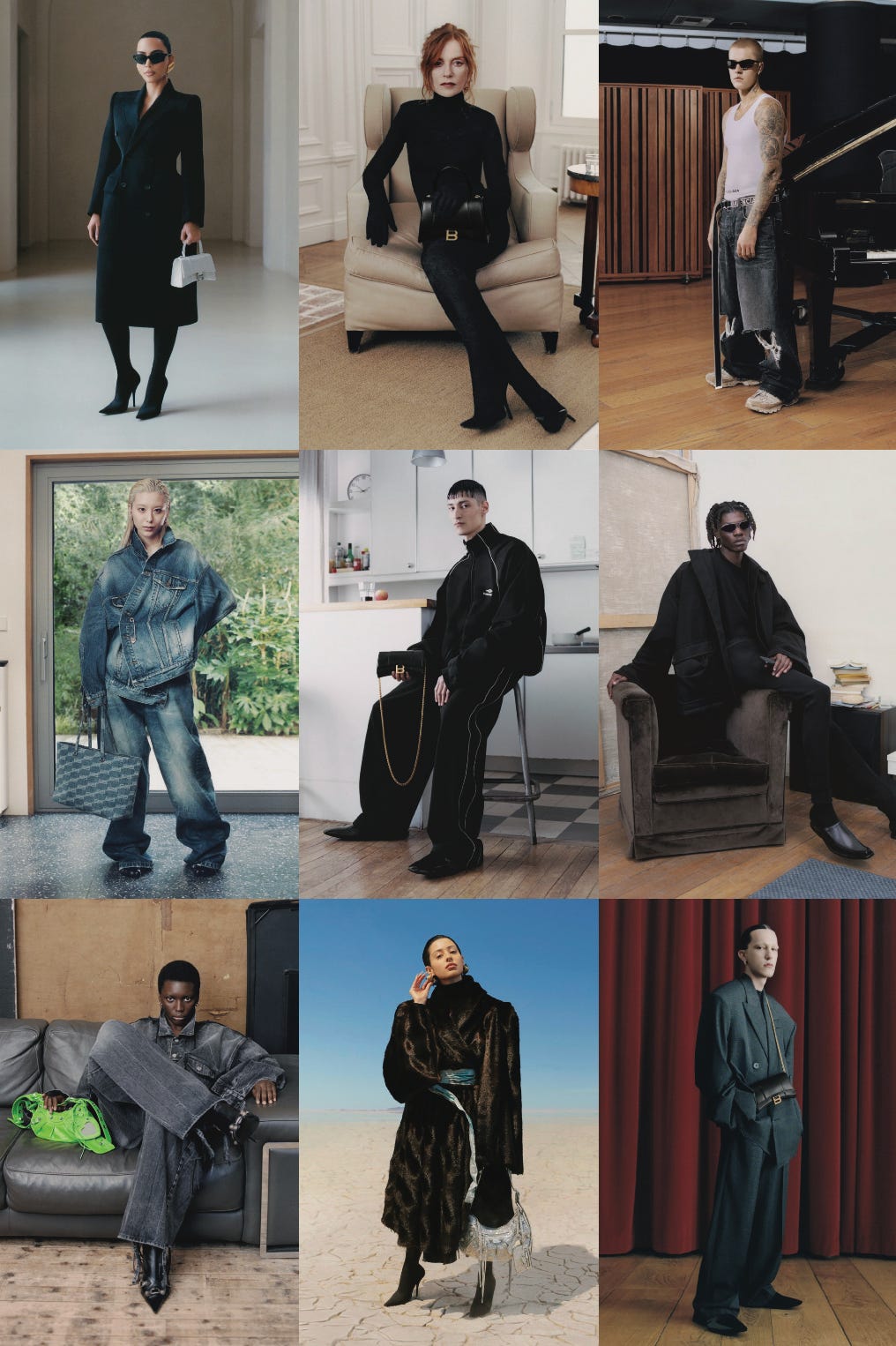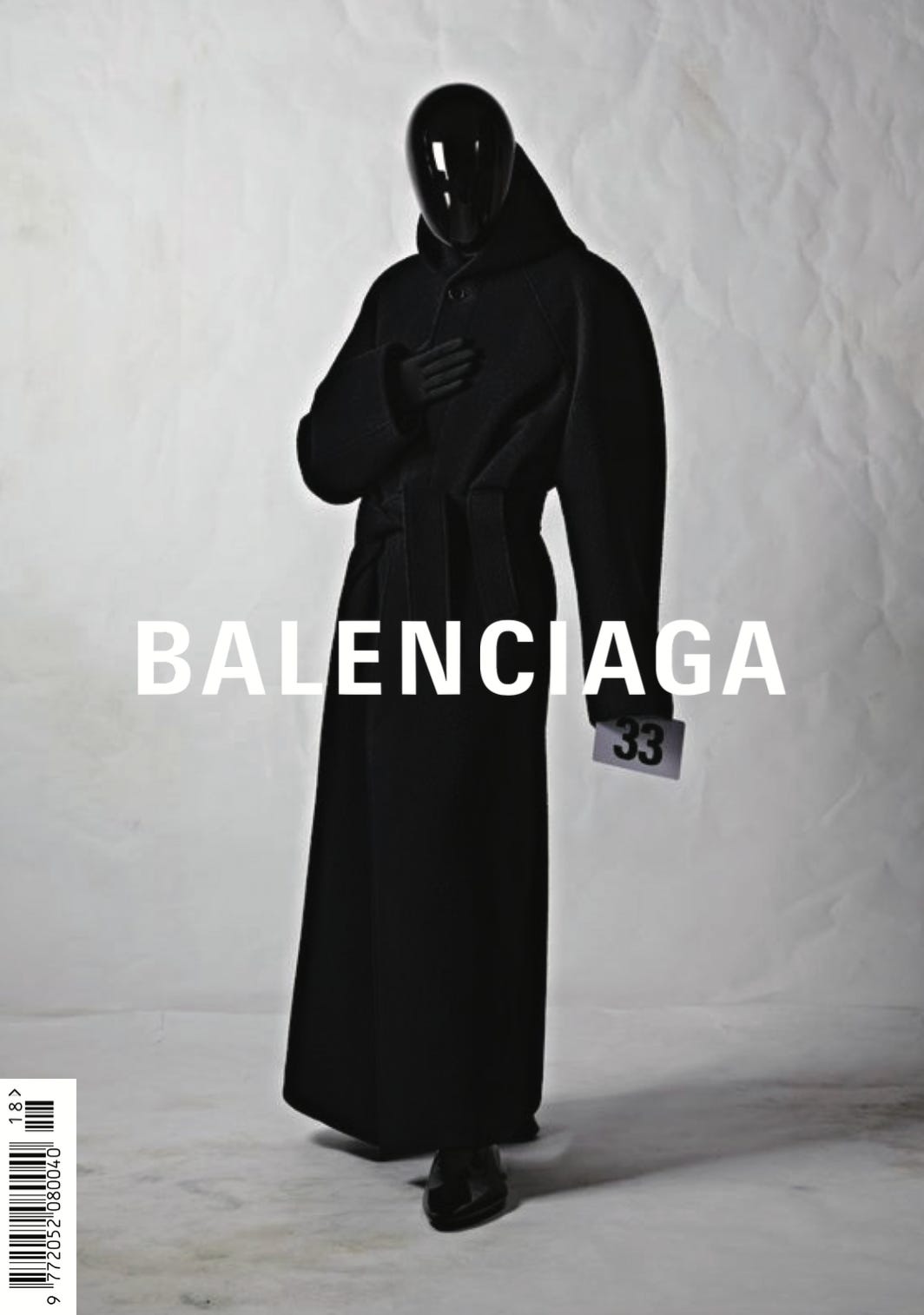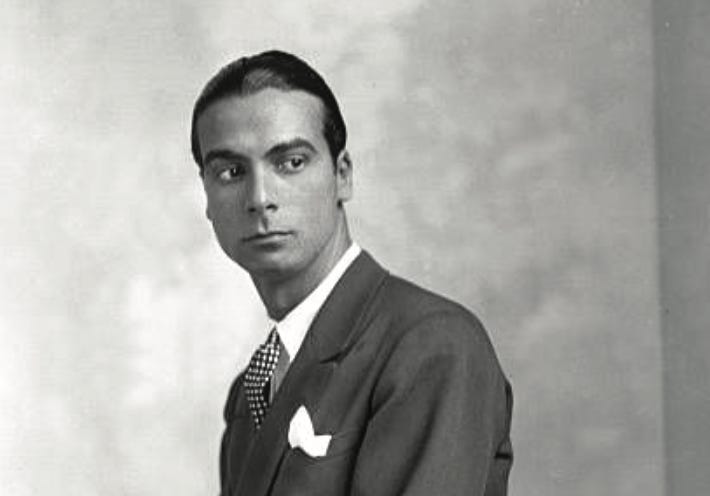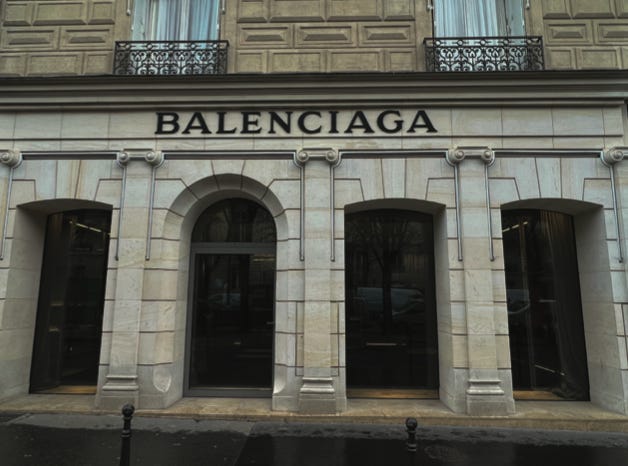How Balenciaga redefined 'luxury' and stirred global controversy
"Nobody told me, 'Make a sneaker.' When I did, they rolled their eyes. But they knew with me that we weren’t going to follow rules" – Demna
I created this in the format of a magazine for an assessment at my old university. Despite its controversy, Balenciaga is a brand that means a lot to me, and I believe letting this project exist only in a folder on my laptop is not doing it any justice. So here you go.
Also, please keep in mind as you read this has not been updated since July 2023. View the footnotes for any extra information (and sources).
“Elegance is elimination.”
Balenciaga’s brand name and identity
Balenciaga, an internationally recognised luxury fashion brand, is celebrated for its exceptionally forward-thinking designs that serve as incredible trend inspiration for the industry. The brand fearlessly experiments with oversized proportions, defying conventional norms to create garments and accessories that command attention. By skillfully playing with scale and silhouette, Balenciaga captivates fashion enthusiasts with its audacious and eye-catching aesthetic, leaving an indelible mark on the industry.
Another integral aspect of Balenciaga’s brand identity lies in its selective use of colour. The brand purposefully embraces a limited colour palette, allowing its designs to showcase intricate details, textures, and structural elements. This deliberate restraint heightens the visual impact of their creations, making a powerful statement through minimalistic yet striking aesthetics.
Logo-mania: Balenciaga’s logo evolution
The original logo was made up of two entwined “B”s joined by three lines, giving it a refined and elegant appearance. The brand name “Balenciaga” was written next to the logo in thin capital letters. Early tags occasionally featured an alternative script logo with a handwritten-looking style, while this was the brand’s primary logo. This initial logo’s monochromatic style emphasised the company’s commitment to subtle refinement and classic style.1
“Haute couture is like an orchestra, whose conductor is Balenciaga.”
Balenciaga from life to death: A deep dive into the brand’s history, birth, and its founder.
Cristóbal Balenciaga’s journey into fashion began with his mother, Martina Eizaguirre, a skilled seamstress. At the age of twelve, he began an apprenticeship at a tailoring business in San Sebastian, Spain. In 1917, Balenciaga established his brand, named Eisa, after a shortened version of his mother’s maiden name. His exceptional designs quickly gained recognition from the public as he worked for Spanish royalty and aristocrats.
By 1919, Balenciaga had opened his first boutique in San Sebastian, expanding rapidly to Madrid and Barcelona. Unfortunately, the Spanish Civil War forced the closure of these boutiques, compelling Balenciaga to relocate his business to Paris.
By 1937, Balenciaga set up his Haute Couture store on 10-12 Avenue George V2. In August of that year, he showcased his debut collection inspired by the Spanish Renaissance within his Parisian boutique.
While it took until the 1950s for Balenciaga’s originality to be widely acknowledged, he eventually reached the echelon of esteemed designers such as Christian Dior, Schiaparelli, and Chanel. In 1953, he introduced the revolutionary balloon dress, followed by groundbreaking creations like the high-waisted evening dress and the sack dress in 1957. These bold innovations in silhouette, coupled with his seasonal collections, redefined the landscape of womenswear.
By the 1960s, Balenciaga’s clientele included figures like the Duchess of Windsor, Pauline de Rothschild, and Gloria Guinness, who admired his commitment to discreet yet distinctive touches — a concept now recognised as “quiet luxury.”
Balenciaga’s impact forever changed the fashion industry; he was known as the “king of couture.” Even Christian Dior himself once stated, “Haute couture is like an orchestra, whose conductor is Balenciaga... We other couturiers are the musicians, and we follow the directions he gives.” After decades of immense success, Balenciaga decided to close his boutique in 1968 and said that it was impossible to design true couture.
Tragically, he passed away four years later, on March 23, 1972, due to a heart attack.
Balenciaga returned to the world of couture with its Fall/Winter 2020 collection. Demna Gvasalia, the current creative director, showcased the 50th couture show in the same location as the 49 shows that came before it over 50 years ago. This homage pays tribute to Balenciaga’s enduring legacy and his everlasting influence on the realm of fashion.
My journey with Balenciaga
3In 2017, I became aware of Balenciaga when Demna released the Speed Trainer, also known as the 'sock shoe' due to its sock-like appearance. Since then, I have been closely following the brand's evolution. In 2019, I visited their store in Westfield Sydney, for the first time.
The first runway livestream I watched was the Winter 2020 show, and I have watched every show since then. In 2022, I made my first Balenciaga purchase online, and at the beginning of 2023, I had the chance to visit their flagship store in Paris to buy my second item.
A particularly exciting experience was when I secured an appointment at their couture store on Avenue George V, the exact location chosen by Mr Balenciaga in 1937. There, I had the privilege of seeing and touching pieces from the 50th and 51st couture shows while the sales associate provided insights into their design and creation.
“Balenciaga’s recent collaboration with Fortnite hints at a vision that has today’s teenagers poised to become the brand’s key consumer demographic.”
Demna Devotees
Balenciaga caters to a target market consisting of younger, upper-class individuals with an interest in fashion and pop culture. According to Demna, in 2021, 60% of Balenciaga’s customers were under 354. While the Balenciaga website presents separate categories for women and men, their products are designed to be unisex, appealing to a diverse range of customers.
In recent years, the luxury market has witnessed a decline in exclusivity, with designer items becoming much more accessible. However, Balenciaga has managed to maintain its exclusivity by maintaining high price points. Consequently, their target market, based on income level, has remained unchanged.
Balenciaga frequently incorporates celebrities and public figures into their campaigns. Moreover, Balenciaga’s global reach is enhanced by free international shipping through its website5, making its products accessible to customers worldwide.

Rule Breakers: Culture and values
Balenciaga is renowned for its oversized tailoring, dystopian influences, streetwear aesthetics, and its ability to incorporate politics, pop-culture references, and the modernisation of Mr Balenciaga’s traditional couture, as noted by System Magazine6.
Under the creative direction of Demna, the brand consistently sets trends and pushes the boundaries. A prime example is when Demna subverted the viral ‘sock shoes’ by creating the Triple S Sneaker, an ultra-chunky shoe with three soles. Previously, Balenciaga has integrated the brand name with pre-existing logos, such as Bernie Sanders and Mastercard, adding a touch of irreverence and contemporary relevance to their designs.
Beyond their captivating fashion shows, Balenciaga goes the extra mile to create memorable experiences. In a previous show, they collaborated with Spanish installation artist Santiago Sierra, who transformed the Parc des Expositions de Villepinte by filling it with 275 cubic meters of mud, creating a visually striking and thought-provoking set design7.
Furthermore, Balenciaga demonstrates a commitment to social and environmental responsibility. They support organisations like the National Children’s Alliance and World Food Programme and actively engage in initiatives promoting environmental sustainability, pride, and Earth Day.
Balenciaga’s distinct culture and core values, coupled with its fearless innovation, unexpected collaborations, and commitment to social and environmental causes, continue to set it apart from its competitors, solidifying its position as a trailblazer in the fashion industry.
“Nobody told me, ‘Make a sneaker.’ When I did, they rolled their eyes. But they knew with me that we weren’t going to follow rules.”
Balenciaga’s Positioning
Balenciaga holds a unique and distinct position within the marketplace. They cater to a diverse customer base, including fashion-forward individuals who appreciate cutting-edge styles and are willing to make bold fashion statements. In terms of competitive products and market segments, Balenciaga competes with other high-end luxury brands. However, what sets Balenciaga apart is its focus on minimalism, simplicity and its ability to seamlessly blend traditional couture with modern elements.
Balenciaga appeals to a segment of customers who are seeking a more edgy, unconventional, and streetwear-inspired fashion aesthetic. Market segments that align with Balenciaga's positioning may include trendsetters, fashion enthusiasts, and individuals who value quality, innovative designs. Balenciaga's target audience often consists of younger demographics who are interested in embracing a more daring and individualistic style.
“You don’t have to be able to afford Balenciaga to understand its relevance; you see it everywhere on Instagram or your TikTok feed.”
Non-Members Only Club
Balenciaga's personality is a blend of surrealism, humour, and contemporary relevance, engaging audiences through platforms like TikTok with imaginative and witty content. The brand's association with celebrities such as Kim Kardashian, Dua Lipa and Nicole Kidman strengthens its connection to popular culture. Balenciaga's creative director, Demna, personally engages with guests at runway shows, demonstrating a commitment to meaningful connections. Through social media, including Spotify, Balenciaga stays involved in pop culture while being referenced in famous songs by artists like Cardi B, Lizzo, and Doja Cat. The brand's impact is evident in trends like the TikTok runway walk style inspired by the Balenciaga model and muse Mintu. Balenciaga's personality exudes playfulness, trendsetting, and a strong connection to digital communities.
Issues affecting Balenciaga
Balenciaga faced significant backlash [in 2022] when they released a campaign featuring children holding teddy bears dressed in bondage and BDSM gear. Balenciaga later issued an apology and removed all images associated with the campaign. Photographer Gabriele Galimberti clarified that both the children and the objects in the photos were selected by Balenciaga and that he was instructed to photograph in the style of his previous project, Toy Stories (2014).
Further intensifying the situation, Balenciaga faced more backlash for another advertisement in which papers from a Supreme Court case on child pornography were used as background props. The team apologised for this incident as well a few hours later. Balenciaga announced its intention to take legal action against the production company North Six and set designer Nicholas Des Jardins, who was responsible for the advertisement featuring the child pornography court document. The legal action sought compensation of $25 million8. However, the set designer's attorney argued that Balenciaga representatives were present during the shoot and had handled the papers and props used.
Another image from this campaign featured actress Isabelle Huppert and two art books that were visible in the background. These books were related to The Cremaster Cycle (1994–2002) and As Sweet as It Gets (2014). Some attempted to draw connections between the imagery from these art books and the court document, suggesting a hidden message related to child abuse in Balenciaga’s marketing.
The use of controversial props by Balenciaga was seen by some as an attempt at shockvertising, which would not be too out of character for such an avant-garde brand. However, the majority berated Balenciaga with claims that they were run by paedophiles and involved in child trafficking and the Devil.
Special thanks to System Magazine and Kevin at Balenciaga Couture.
It should be noted that Balenciaga had great financial help from his Franco-Polish lover, millionaire Władzio Jaworowski d’Attainville.
This section has not been updated since July 2023.
This statistic comes from an interview conducted by System Magazine.
This is no longer available as of August 2024.
The website this information was taken from has since been shut down.
According to Vogue, Balenciaga dropped their legal action on 2 December 2022.






